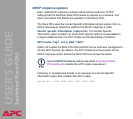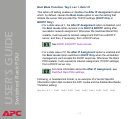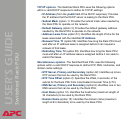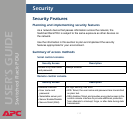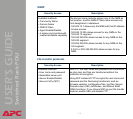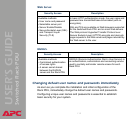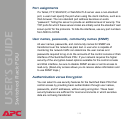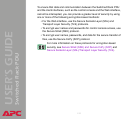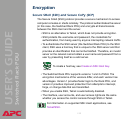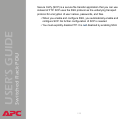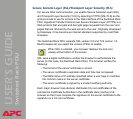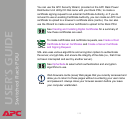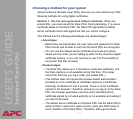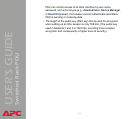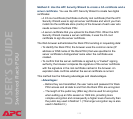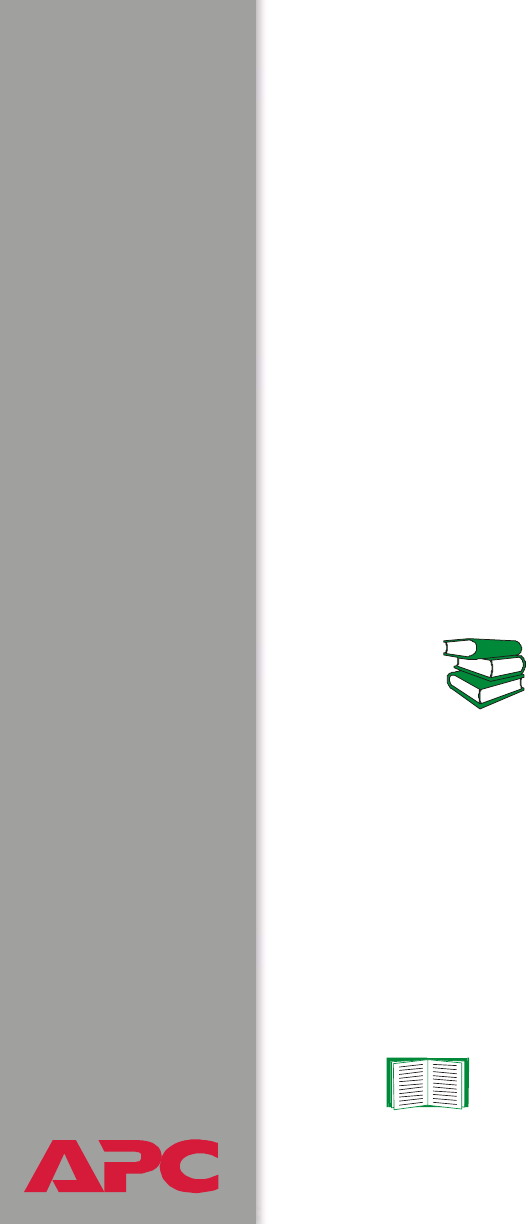
®
USER’S GUIDE
Switched Rack PDU
122
Encryption
Secure SHell (SSH) and Secure CoPy (SCP)
The Secure SHell (SSH) protocol provides a secure mechanism to access
computer consoles or shells remotely. The protocol authenticates the server
(in this case, the Switched Rack PDU) and encrypts all transmissions
between the SSH client and the server.
• SSH is an alternative to Telnet, which does not provide encryption.
• SSH protects the username and password, the credentials for
authentication, from being used by anyone intercepting network traffic.
• To authenticate the SSH server (the Switched Rack PDU) to the SSH
client, SSH uses a host key that is unique to the SSH server and that
provides an identification that cannot be falsified. Therefore, an invalid
server on the network cannot obtain a user name and password from a
user by presenting itself as a valid server.
• The Switched Rack PDU supports versions 1 and 2 of SSH. The
encryption mechanisms of the versions differ, and each version has
advantages. Version 1 provides faster login to the Rack PDU, and
version 2 provides improved protection from attempts to intercept,
forge, or change data that are transmitted.
• When you enable SSH, Telnet is automatically disabled.
• The interface, user accounts, and user access rights are the same
whether you access the control console through SSH or Telnet.
See also
To create a host key, see Create an SSH Host Key.
For information on supported SSH client applications, see
Telnet/SSH.



